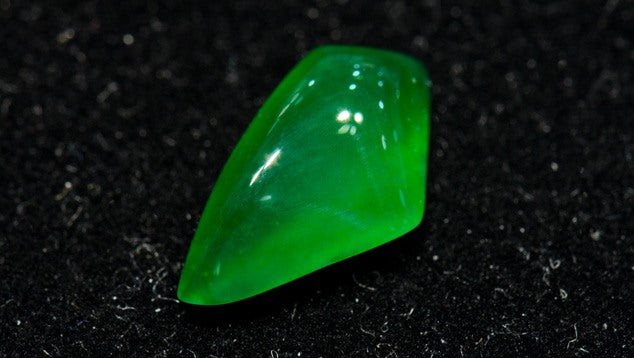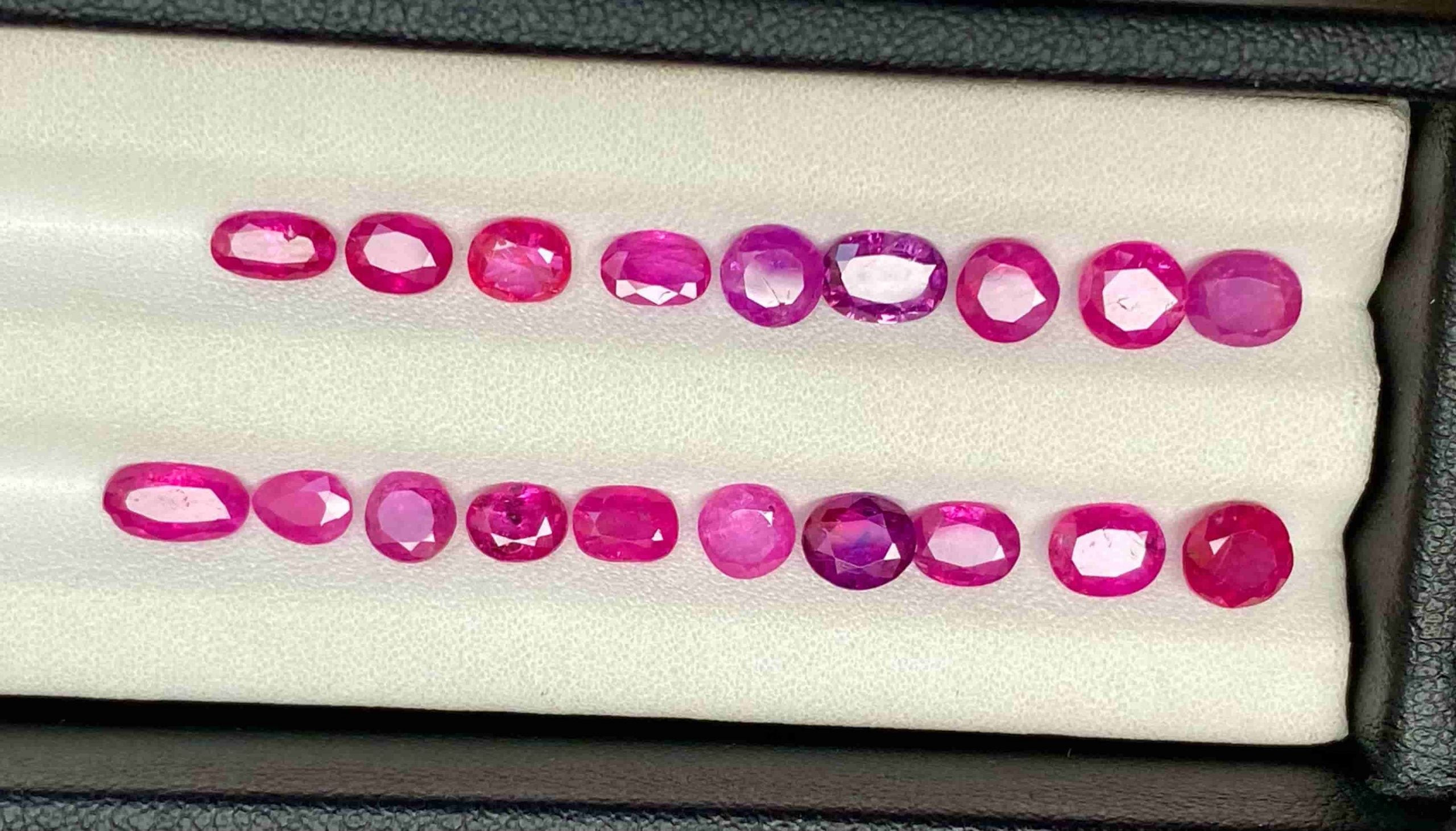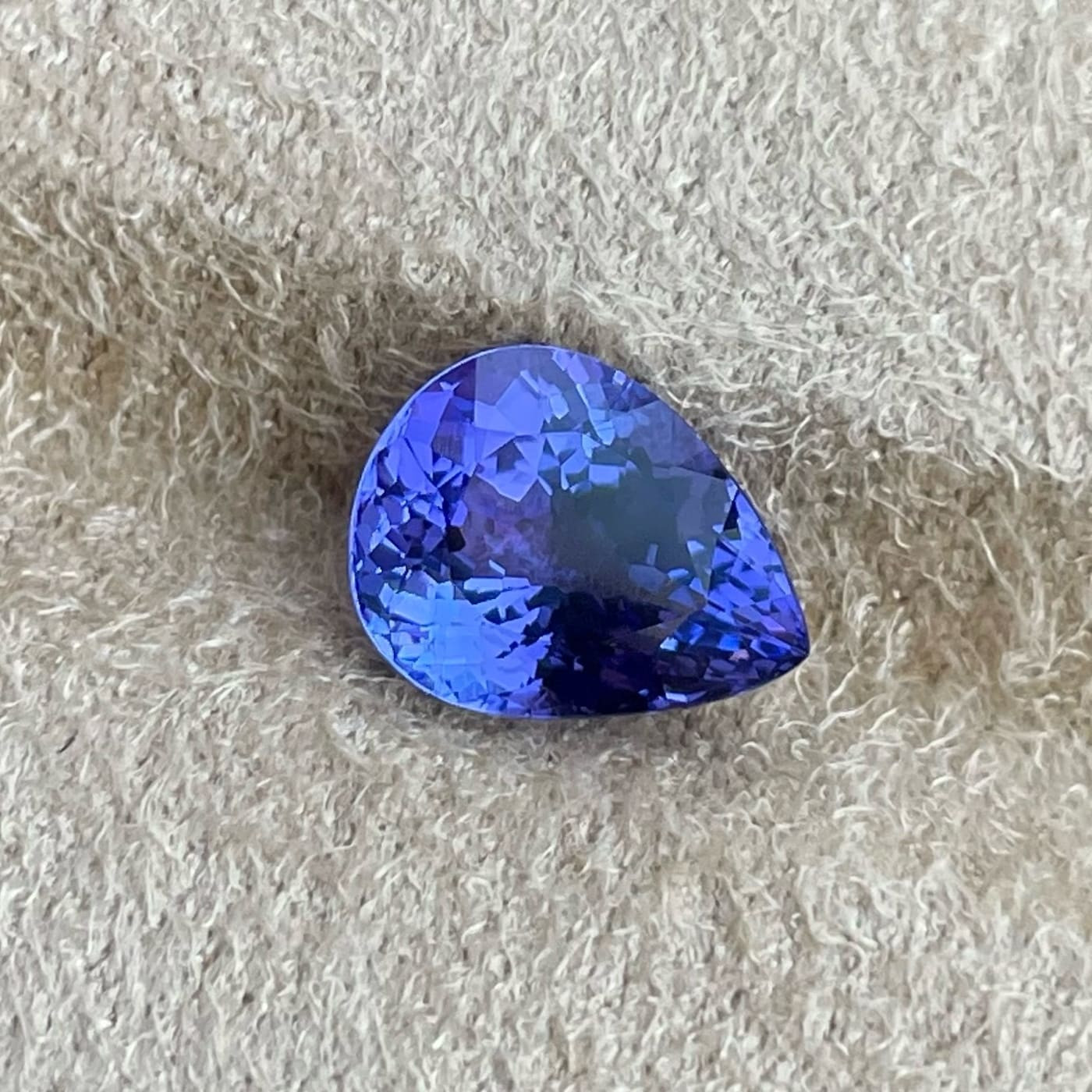The most expensive rock in the world is the blue diamond, a stunning gemstone known for its rarity and exceptional brilliance. At rockscapes.net, we understand the allure of precious stones and their significance in landscaping and design. This comprehensive guide explores the factors that determine the value of rocks and gems, offering insights for homeowners, landscape designers, and anyone fascinated by the earth’s treasures. Explore the fascinating world of geological wonders, valuable minerals, and precious materials.
1. Understanding the Value of Rocks and Gemstones
What makes a rock or gemstone valuable? Several factors contribute to the high prices commanded by certain geological treasures.
- Rarity: Scarcity is a primary driver of value. The rarer a rock or gemstone, the more it is likely to be worth.
- Beauty: Aesthetics play a significant role. Stones with exceptional color, clarity, and brilliance are highly prized.
- Durability: A gemstone’s ability to withstand wear and tear is crucial, especially for jewelry.
- Demand: Market demand significantly influences prices. Popular gemstones often command higher values.
- Historical Significance: Some rocks and gemstones gain value from their historical or cultural significance.
These characteristics create a confluence of desirability, making certain rocks and gemstones highly sought after and incredibly expensive.
2. The Reigning Champion: Blue Diamond
What makes the blue diamond the most expensive rock? Blue diamonds are extraordinarily rare, with their color resulting from trace amounts of boron in their crystal structure.
- Spectacular Shine: Their brilliance is unmatched, captivating gem enthusiasts worldwide.
- Record-Breaking Sales: The Oppenheimer Blue Diamond, weighing 14.62 carats, sold for $57.5 million, setting a record of approximately 3.39 million euros per carat.
- Geological Uniqueness: Blue diamonds form under immense pressure deep within the Earth, making their creation a rare geological event.
The confluence of rarity, beauty, and demand solidifies the blue diamond’s position as the most expensive rock in the world.
3. The Allure of Colored Diamonds
Why are colored diamonds so valuable? Colored diamonds, including blue, red, pink, and green diamonds, owe their hues to the presence of trace elements or structural abnormalities during their formation.
- Rarity and Uniqueness: Natural colored diamonds are exceedingly rare, making them highly coveted by collectors.
- Color Intensity: The intensity of color significantly impacts value. Vivid, deeply colored diamonds command the highest prices.
- Investment Potential: Colored diamonds are seen as valuable investments, often appreciating in value over time.
Their unique colorations and investment appeal contribute to their high market value.
4. Red Diamond: An Exceptionally Rare Gem
What distinguishes the red diamond? As one of the rarest colored diamonds, red diamonds possess a unique allure.
- Limited Discoveries: Fewer than 30 red diamonds have been found globally, with most weighing less than half a carat.
- Unique Color Origin: Unlike other colored diamonds, the red hue results from plastic deformation of the crystal lattice, not from impurities.
- Primary Source: The Argyle Mine in Australia is the primary source of these exceptional gems.
- Notable Sales: The Moussaieff Red Diamond, weighing 5.11 carats, was acquired for $8 million, highlighting the immense value of red diamonds.
 Moussaieff Red Diamond, a rare red diamond known for its intense color and significant value
Moussaieff Red Diamond, a rare red diamond known for its intense color and significant value
5. Blue Garnet: A Color-Changing Marvel
What is unique about the blue garnet? Blue garnet is a rare variety of garnet known for its color-changing properties.
- Color Transformation: This gem appears blue-green under daylight and turns purple under incandescent light.
- Limited Deposits: Blue garnet deposits are found in only a few locations, including Madagascar, the United States, Turkey, and Russia.
- Significant Sale: A 4.2-carat blue garnet was sold for $6.8 million in 2003, underscoring its high value.
This color-changing phenomenon makes blue garnet a distinctive and valuable gemstone.
6. Taaffeite: A Serendipitous Discovery
How was taaffeite discovered? Taaffeite is an incredibly rare mineral often mistaken for spinel.
- Accidental Identification: The gem was first discovered already cut and polished in Dublin, Ireland, in 1945.
- Unique Refraction: The primary distinction between spinel and taaffeite is the double refraction found in taaffeite.
- Source Locations: This gem is found in alluvial deposits in Sri Lanka and Tanzania.
The accidental discovery and unique optical properties contribute to taaffeite’s rarity and value.
7. Grandidierite: A Bluish-Green Treasure
What are the key characteristics of grandidierite? Grandidierite is a rare gem known for its bluish-green hue and pearly transparency.
- Composition: It is found as an accessory mineral on boron- and aluminum-rich rocks.
- Discovery Location: First discovered in Madagascar in 1902.
Its rarity and unique coloration make grandidierite a highly valuable gemstone.
8. Jadeite: The Most Expensive Jade
What makes jadeite so valuable? Jadeite is the most expensive and beautiful variety of jade, prized for its dark green translucent appearance.
- Rarity: Significantly rarer than other jade types.
- Value Factors: The value of jadeite is determined by its level of transparency and depth of color.
- Record Sales: Some exceptional pieces have sold for over $1 million per carat.
 High-quality jadeite, known for its intense green color and translucent appearance
High-quality jadeite, known for its intense green color and translucent appearance
9. Serendibite: A Complex Inosilicate
What is the composition of serendibite? Serendibite is an extremely rare gemstone with a complex chemical formula.
- Chemical Makeup: This inosilicate contains calcium, boron, aluminum, magnesium, and other elements.
- Discovery and Locations: Originally discovered in Sri Lanka in 1902, it was later found in the Mogok region of Myanmar.
Its complex composition and scarcity make serendibite a highly sought-after gemstone.
10. Diamond: The Classic Gemstone
What makes diamonds so enduringly popular? Diamonds, composed of pure carbon, are renowned for their strength and durability.
- Formation: They are found in cooled kimberlites that formed over billions of years.
- Engagement Rings: Diamonds are a centerpiece of most engagement rings, symbolizing lasting love.
Their inherent beauty, strength, and cultural significance make diamonds a classic and valuable gemstone.
11. Ruby: The King of Gemstones
What gives rubies their vibrant red color? Ruby, known for its shades of red, owes its color to the presence of chromium oxide.
- Corundum Family: Ruby belongs to the corundum family, with sapphires being other variants.
- Hardness: It has a hardness of 9 on the Mohs scale, second only to diamond.
- Global Deposits: Rubies are found on all continents except Antarctica, with the most valuable stones coming from Asia.
 High-quality ruby, celebrated for its rich red color and durability
High-quality ruby, celebrated for its rich red color and durability
12. Alexandrite: The Color-Changing Gem
What is the color-changing phenomenon in alexandrite? Alexandrite, a type of chrysoberyl, changes color depending on the light source.
- Color Shift: It appears green in sunlight and red in incandescent light due to the presence of iron, titanium, and chromium.
- Discovery: Discovered in 1830 in the Ural Mountains of Russia.
This unique color-changing property makes alexandrite a rare and valuable gemstone.
13. Red Beryl: The Red Emerald
Where is red beryl found? Red beryl, sometimes described as the red emerald, is an extremely rare variety of beryl found in Utah and New Mexico.
- Composition: It is a mineral composed of beryllium, aluminum, and silicate, with its red color resulting from trace elements.
- Synthetic Production: Synthetic red beryl has been produced, making it essential to verify authenticity.
Its rarity and vivid color make red beryl a highly desirable gemstone.
14. Padparadscha Sapphire: The Lotus Flower Stone
What gives padparadscha sapphires their unique color? Padparadscha sapphires, named after the Sanskrit word for lotus flower, are known for their unique combination of pink and orange hues.
- Source Locations: Primarily found in Sri Lanka, as well as Tanzania and Madagascar.
- Rarity and Demand: These sapphires are extremely rare and highly sought after by collectors.
Their unique coloration and rarity make padparadscha sapphires a valuable addition to any collection.
15. Musgravite: A Rare Aluminum Oxide
What is the composition of musgravite? Musgravite is an aluminum oxide with varying proportions of magnesium, iron, and zinc.
- Discovery: Originally discovered in 1967 at Musgrave Ranges, Australia.
- Color Variations: Musgravites can be green, blue, or purple.
Its rarity and hardness make musgravite a prized gemstone.
 A rare musgravite gemstone, showcasing its unique composition and color variations
A rare musgravite gemstone, showcasing its unique composition and color variations
16. Sapphire: A Timeless Gemstone
Where are sapphires commonly found? Sapphires are among the most famous gemstones, known for their range of colors.
- Color Variations: While best known for their blue hues, sapphires can also be pink, green, or yellow-orange.
- Global Deposits: Significant sapphire deposits are located in India, Vietnam, Russia, Thailand, Australia, the United States, China, Myanmar, Sri Lanka, and Madagascar.
Their beauty, durability, and availability in various colors make sapphires a timeless and valuable gemstone.
17. Benitoite: California’s Gemstone
What are the defining characteristics of benitoite? Benitoite, composed of barium, titanium, and silica, is known for its brilliant blue color and strong fluorescence.
- Discovery Location: Found in San Benito County, California, giving it its name.
- Official Gemstone: It is the official gemstone of California, designated in 1985.
Its unique composition, fluorescence, and connection to California make benitoite a distinctive and valuable gemstone.
 Benitoite, the official gemstone of California, celebrated for its vibrant blue color and fluorescence
Benitoite, the official gemstone of California, celebrated for its vibrant blue color and fluorescence
18. Black Opal: The Dark Beauty
Where does black opal originate? Black opal, one of the rarest and most popular types of opal, is known for its dark body tone.
- Primary Source: The world’s black opal supply comes predominantly from Lightning Ridge, New South Wales, Australia.
- Buying Advice: It is crucial to buy black opal from a reputable dealer to ensure authenticity and quality.
Its rarity and unique dark coloration make black opal a highly sought-after gemstone.
19. Demantoid Garnet: The Green Garnet
What makes demantoid garnet so special? Demantoid garnet is a remarkable green variety of andradite garnet.
- Discovery: Discovered in the mid-1800s in Russia.
- Size Limitation: It is rare to find demantoid garnet over 2 carats.
Its rarity, vibrant green color, and historical significance make demantoid garnet a valuable gemstone.
20. Poudretteite: A Pink Gem from Quebec
How was poudretteite discovered? Poudretteite was first discovered in the 1960s at Mont Saint-Hilaire in Quebec by the Poudrette family.
- Color and Hardness: The gem is naturally pink and has a Mohs hardness of 5.
- Notable Find: The first gem-quality poudretteite was found in Mogok, Burma, in 2000, weighing 9.41 carats.
Its rarity and unique pink color make poudretteite a prized gemstone.
21. Fire Opal: The Fiery Mineraloid
What causes the shimmering effect in fire opal? Fire opal is a mineraloid known for its vibrant colors and shimmering effect.
- Composition: It is a hydrated form of silica or silicon dioxide, allowing it to diffract light.
- Color Variations: Opals can form in various colors depending on environmental conditions during formation.
Its unique composition and vibrant colors make fire opal a captivating and valuable gemstone.
 Fire Opal, a mineraloid known for its vibrant colors and shimmering effect caused by light diffraction
Fire Opal, a mineraloid known for its vibrant colors and shimmering effect caused by light diffraction
22. Jeremejevite: A Borate Mineral
What are the ideal uses for jeremejevite? Jeremejevite is an aluminum-bearing borate mineral with associated fluoride and hydroxide.
- Discovery: First found in the Adun-Chilon Mountains in Siberia in 1883.
- Hardness: It has a hardness similar to quartz, making it suitable for jewelry making.
Its rarity and durability make jeremejevite a valuable gemstone for collectors and jewelry designers.
23. Tanzanite: A Tanzanian Treasure
Where is tanzanite exclusively found? Tanzanite is a blue-colored variety of zoisite found exclusively in northern Tanzania.
- Discovery: Discovered in 1967 by a Masai tribesman.
- Future Scarcity: Experts predict that the supply of tanzanite could run out within the next 20-30 years, increasing its rarity.
Its limited source and unique color make tanzanite a valuable and increasingly rare gemstone.
 Tanzanite, a rare gemstone exclusively found in Tanzania, known for its vibrant blue color
Tanzanite, a rare gemstone exclusively found in Tanzania, known for its vibrant blue color
24. Gemstones in Landscaping: A Touch of Luxury
How can gemstones enhance landscaping designs? While large gemstones may be too valuable for outdoor use, smaller stones and minerals can add a luxurious touch to landscaping.
- Accent Pieces: Use smaller gemstones as accent pieces in rock gardens or water features.
- Decorative Gravel: Incorporate crushed gemstones into decorative gravel pathways or garden beds.
- Mineral Displays: Create mineral displays in outdoor showcases to highlight the beauty of various stones.
25. Factors Influencing Gemstone Prices
What elements dictate the price of gemstones? Various factors influence gemstone prices, making some more valuable than others.
- The 4Cs: Cut, Color, Clarity, and Carat weight are essential determinants of a gemstone’s value.
- Treatment: Natural, untreated gemstones are typically more valuable than treated ones.
- Origin: The geographic origin of a gemstone can impact its price, with certain regions producing higher-quality stones.
- Market Trends: Fashion trends and consumer demand can influence gemstone prices.
26. Rockscapes.net: Your Partner in Stone and Landscape Design
How can rockscapes.net assist with landscape design projects? At rockscapes.net, we provide a wealth of information and resources for homeowners, landscape designers, and stone enthusiasts.
- Design Inspiration: Explore our gallery of landscape designs featuring various types of rocks and gemstones.
- Stone Selection: Learn about different types of stones and their applications in landscaping.
- Expert Advice: Consult our team of experts for guidance on selecting the right stones for your project.
- Supplier Network: Connect with reputable stone suppliers in your area.
27. The Role of Geological Research in Valuing Rocks
How does geological research contribute to understanding the value of rocks and gemstones? Geological research plays a crucial role in identifying, classifying, and valuing rocks and gemstones. According to research from Arizona State University’s School of Earth and Space Exploration, advanced analytical techniques help determine the composition, structure, and origin of minerals, providing insights into their rarity and quality.
- Mineral Identification: Geological studies help identify rare minerals and determine their chemical composition.
- Formation Analysis: Research into the geological conditions under which gemstones form can explain their unique properties and rarity.
- Dating Techniques: Radiometric dating methods can determine the age of rocks and gemstones, adding to their historical and scientific value.
28. Environmental Considerations in Gemstone Mining
What are the environmental impacts of gemstone mining? It’s important to consider the environmental impact of gemstone mining. Sustainable and ethical sourcing practices are becoming increasingly important in the industry.
- Habitat Destruction: Mining operations can lead to habitat destruction and soil erosion.
- Water Contamination: Mining activities can contaminate water sources with chemicals and sediment.
- Ethical Sourcing: Supporting mines with responsible environmental practices helps minimize negative impacts.
29. The Future of Gemstone Valuation
How might gemstone valuation evolve in the future? The future of gemstone valuation may involve advanced technologies and a greater emphasis on sustainability and ethical sourcing.
- Advanced Authentication: Technologies like blockchain can provide transparent and verifiable records of a gemstone’s origin and history.
- Sustainable Mining Practices: Increased consumer demand for ethically sourced gemstones will drive the adoption of sustainable mining practices.
- AI-Powered Valuation: Artificial intelligence could be used to analyze vast datasets of gemstone characteristics to provide more accurate valuations.
30. Frequently Asked Questions (FAQ) About Expensive Rocks
- What Is The Most Expensive Rock In The World?
The most expensive rock in the world is the blue diamond, valued at approximately 3.39 million euros per carat. - Why are blue diamonds so expensive?
Blue diamonds are expensive due to their rarity, exceptional brilliance, and the presence of trace amounts of boron. - What is the rarest colored diamond?
The rarest colored diamond is the red diamond, with fewer than 30 known specimens found worldwide. - Where are black opals primarily found?
Black opals are primarily found in Lightning Ridge, New South Wales, Australia. - What gives rubies their red color?
Rubies get their red color from the presence of chromium oxide. - What is the Mohs hardness of a diamond?
The Mohs hardness of a diamond is 10, the highest rating on the scale. - How was taaffeite discovered?
Taaffeite was discovered accidentally already cut and polished in Dublin, Ireland, in 1945. - What is the official gemstone of California?
The official gemstone of California is benitoite. - What is demantoid garnet known for?
Demantoid garnet is known for being a rare green variety of andradite garnet. - Where is tanzanite exclusively found?
Tanzanite is exclusively found in northern Tanzania.
Conclusion: Discover the Beauty of Rocks with Rockscapes.net
Ready to explore the world of rocks and gemstones for your landscape design? Visit rockscapes.net today for inspiration, expert advice, and connections to trusted suppliers. From the allure of blue diamonds to the practicality of decorative gravel, we have everything you need to create stunning outdoor spaces. Discover design ideas, learn about stone types, and get expert advice to transform your landscape.
For more information and to start your landscape transformation, contact us:
Address: 1151 S Forest Ave, Tempe, AZ 85281, United States
Phone: +1 (480) 965-9011
Website: rockscapes.net
